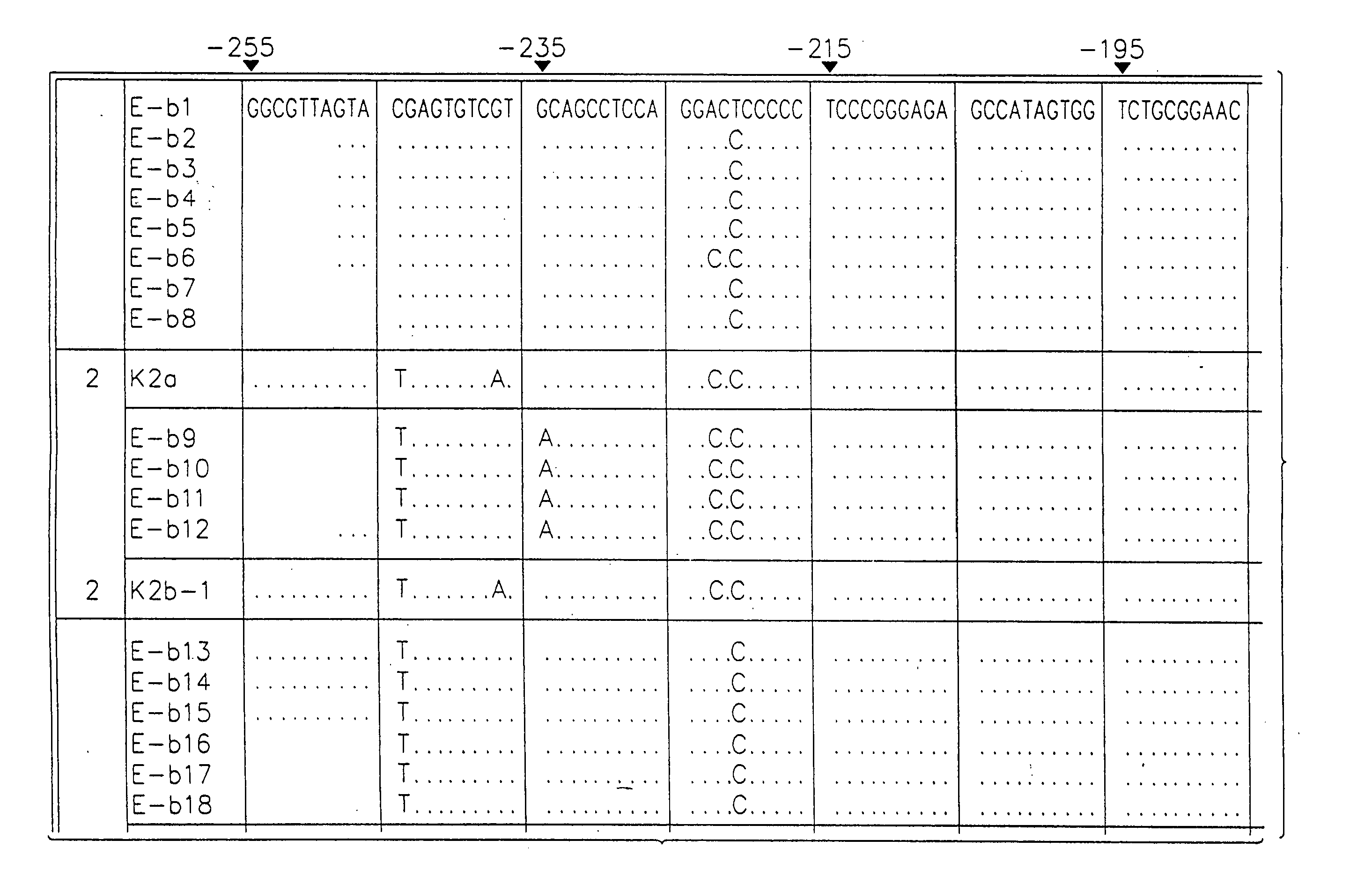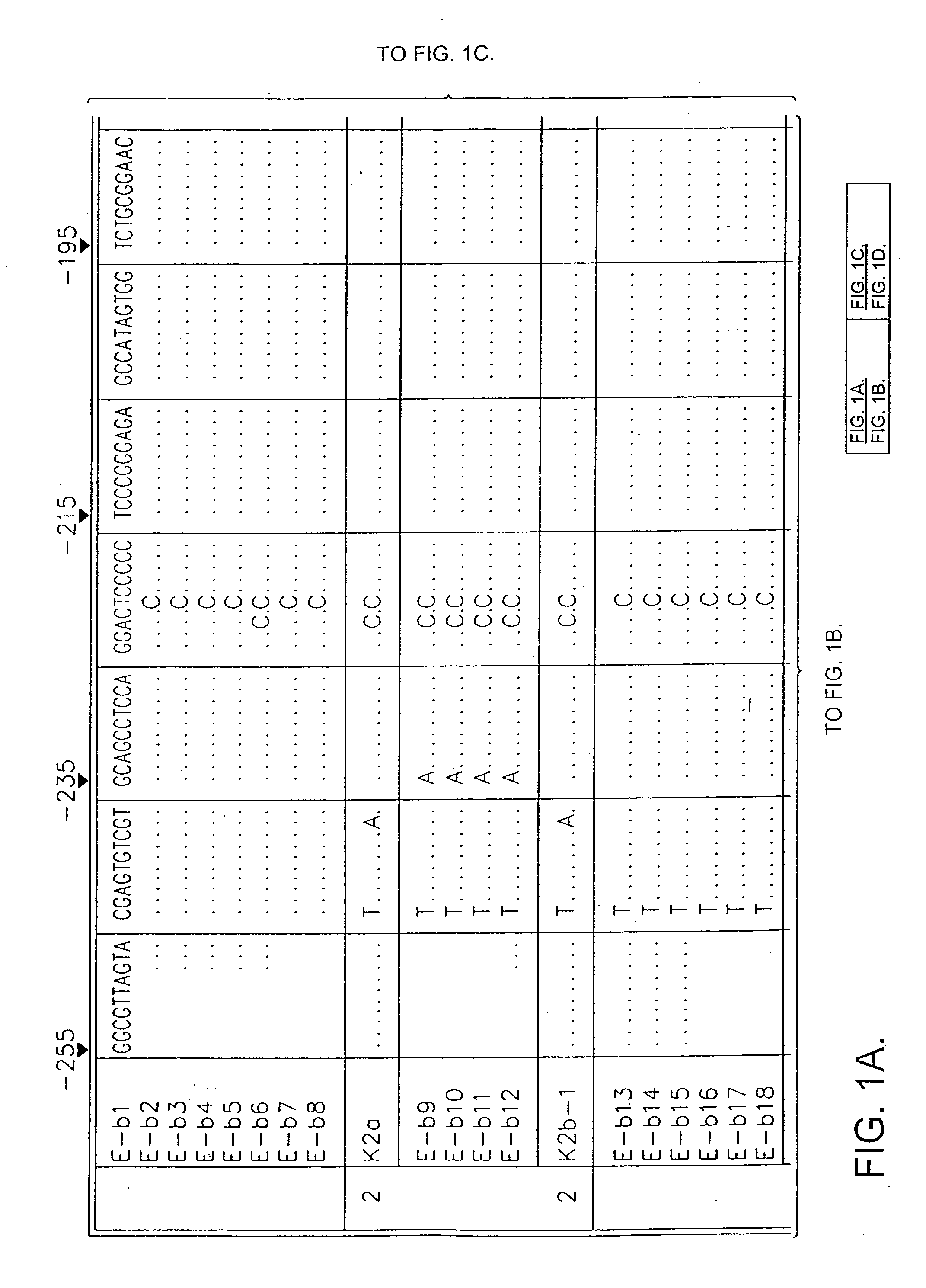Hepatitis-C virus testing
a hepatitis c virus and antibody technology, applied in the field of new types of hepatitis c virus, can solve the problems of false positive reactions of second-generation elisa tests, unreliability of antibodies, and lack of specificity of c100-3 antibody tests for hepatitis c virus
- Summary
- Abstract
- Description
- Claims
- Application Information
AI Technical Summary
Benefits of technology
Problems solved by technology
Method used
Image
Examples
Embodiment Construction
I. Analysis of Hepatitis C Virus and Phylogenetic Relationship of Types 1, 2 and 3
Introduction
[0049] Sequence analysis of the 5′ non-coding region of hepatitis C virus (HCV) amplified from the plasma of individuals infected in Britain revealed the existence of three distinct groups of HCV, differing by 9-14% in nucleotide sequence. Two of the groups identified were similar to those of HCV variants previously termed type 1 and type 2, while the third group appeared to represent a novel virus type. Sequence comparisons were then made between the three virus types in other regions of the viral genome. In the NS-5 region, a high degree of nucleotide and amino acid sequence diversity was observed, with samples classified here as type “3” (SEQ ID NO:13) again forming a distinct group that was phylogenetically distinct from type 1 and type 2 variants. Type 3 sequences were similarly differentiated in the NS-3 (SEQ ID NO:14) and core (SEQ ID NO:15 and 19) regions from HCV type 1 sequences...
PUM
| Property | Measurement | Unit |
|---|---|---|
| pH | aaaaa | aaaaa |
| pH | aaaaa | aaaaa |
| reactivity | aaaaa | aaaaa |
Abstract
Description
Claims
Application Information
 Login to View More
Login to View More - R&D
- Intellectual Property
- Life Sciences
- Materials
- Tech Scout
- Unparalleled Data Quality
- Higher Quality Content
- 60% Fewer Hallucinations
Browse by: Latest US Patents, China's latest patents, Technical Efficacy Thesaurus, Application Domain, Technology Topic, Popular Technical Reports.
© 2025 PatSnap. All rights reserved.Legal|Privacy policy|Modern Slavery Act Transparency Statement|Sitemap|About US| Contact US: help@patsnap.com



